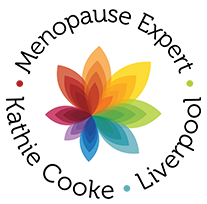HRT (hormone replacement therapy) is medication that replaces the hormones that fall during menopause: Oestrogen, Progesterone and Testosterone.
Oestrogen – fluctuating and falling levels (that occur during menopause) can give rise to many symptoms. Oestrogen is the main component of HRT. The Oestrogen used in HRT is often referred to as "natural" or “body identical” because it resembles oestrogens found in the human body - oestradiol, oestrone and oestriol.
Oestrogen can be taken by a daily tablet, twice weekly or weekly patch, daily gel or spray. People respond differently to different types, routes and doses of oestrogen and sometimes several adjustments of therapy are required. If possible, any type should be tried for 3 months before deciding whether a change is required.
Benefits of oestrogen
- Relief from menopause symptoms
- Reduced risk of osteoporosis and fractures
- Beneficial cosmetic effect on skin, improved hair and nails resilience
- Relief from vaginal dryness and discomfort
- Lower risk of urinary tract infections
Progesterone/progestogen – this is a silent but essential component added to oestrogen for women who still have their uterus – or sometimes after hysterectomy too.
A progestogen is added to oestrogen to reduce the risk of oestrogen causing womb lining thickening, which can lead to womb lining cancer (endometrial cancer).
The dose of the progestogen component is proportionate to the oestrogen dose to prevent this happening.
Progestogens are versions of naturally occurring progesterone hormone – altered to give useful properties such as contraception, heavy bleed control etc.
Some progestogens closely resemble progesterone (dydrogesterone, drospirenone medroxyprogesterone acetate and micronised progesterone), whilst others are closer to testosterone (norethisterone, norgestrel and levonorgestrel).
The regime (duration and frequency) of the progestogen is influenced by presence or absence of periods, and age.
Testosterone - Many people think of it as the “male” hormone which is true, but women produce testosterone too.
Testosterone is made in the ovaries and adrenal glands, which are small glands near the kidneys. and therefore there is a lifetime - although dwindling - supply. It would be unusual for a woman who is still having periods to have “low” testosterone levels.
Currently, the only indication for prescribing testosterone is low libido.
Anecdotal evidence (ie not, as yet, supported by robust research) suggest some women find improvement in energy, stamina, mood or cognition.
Female sexuality and desire are very complex and not well understood. For many women testosterone levels have no bearing upon their libido, and supplementing testosterone certainly doesn't work for every woman either – many women who try testosterone supplementation are disappointed.
In response to increasing interest, The British Menopause Society have published a statement regarding testosterone prescribing.
A useful resource is this factsheet published on the public arm of the British Menopause Society – Women’s Health Concern. For more information about prescribing testosterone see here – prescribing testosterone
